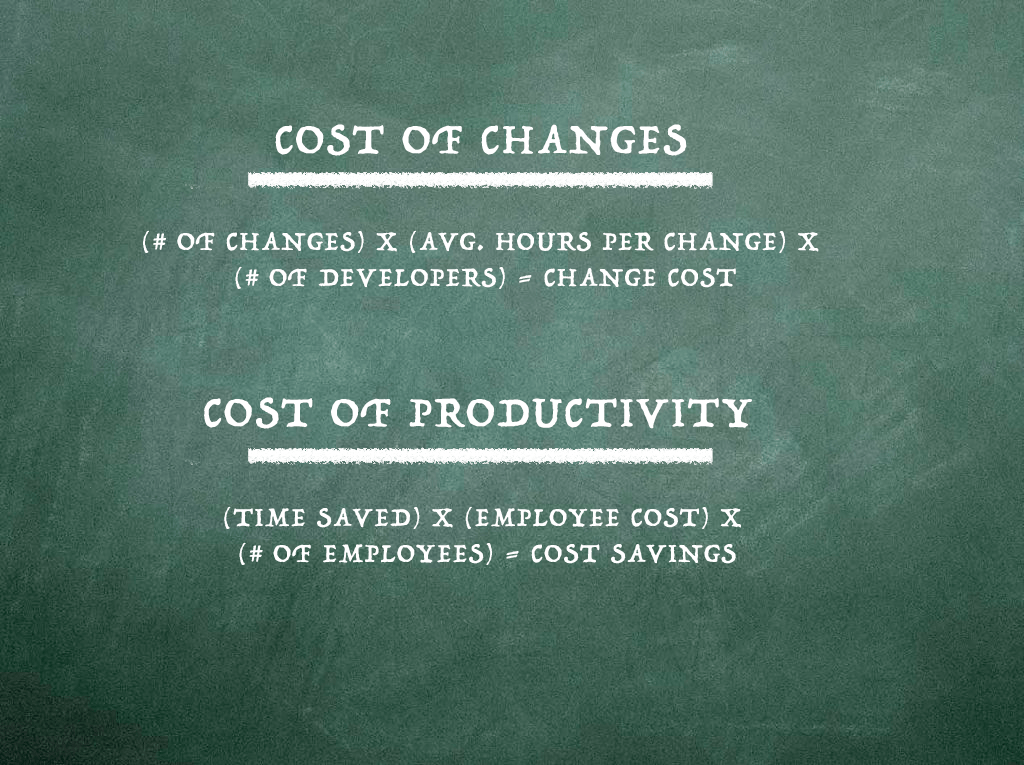When building a house, steps must be taken to ensure the final product matches the envisioned design, stays within the allotted budget, and doesn’t take longer than expected. The way an architect creates detailed specifications and blueprints enables builders to seamlessly bring projects to life while mitigating potential issues and overruns.
In software development, the same principles should apply when thinking about constructing any application. UX (user experience) design has become a critical step for software development by maximizing both budget and resources while simultaneously delivering a high-quality product in a timely manner.
Maximizing budgets and mitigating risks
With over 25 years of real-world application, it is safe for us to say that implementing UX design at the beginning of development will save time and money. A UX designer is in the position to identify and solve project problems and make changes even before development has started.
Early identification of problems will allow stakeholders to react and plan accordingly to ensure that budgets and timelines are not negatively affected. Robert Pressman, the author of Software Engineering: A Practitioner’s Approach, conducted studies that show that resolving issues during the analysis and design phases can save up to 150x the cost addressing the same issues during deployment, and it significantly decreases the time it takes to get the product to market.
What are the most common reasons software development has overruns?
Once you’ve identified the most common reasons for overruns, ask which of these are controllable, and how can they be controlled. Applying UX design early in the development process gives the product the best chance to stay on budget and on time.
1. Project goals: Understanding specific project goals are critical to the success of a product. Testing those goals, then applying them to the real world, balances product needs with industry trends, technology options, and user behaviors.
2. Communication: The UX designer connects the product stakeholders (customers, developers, and users) through documentation. By clearly understanding and documenting the individual’s needs and how they relate to each other, the UX designer has the ability to understand the goals and needs of the product, owners, and audience in unison, allowing for a streamlined design.
3. Resources estimates: Identifying the full requirements and development resources is necessary for executing the project successfully. While the UX designer is always looking to create an immersive experience for the user, they also continually seek out options to keep costs of development and implementation under control. Whether it is adjusting resources or altering requirements, the earlier you can fully identify the scope of the work, the more cost-effective the project will be
4. Defining systems requirements: Taking the time to understand the application and users’ needs defines the critical requirements of the project. Determining conditions early on allows for proper resource allocation and planning. Vetting and testing applications will mitigate the need for making expensive changes during the development phase.
5. Identify risks: Before and during the production cycle, UX designers continually identify risks by researching, prototyping, and testing requirements. From topline requirements to product deployment, the UX designer is the eyes and ears that ensure that all risks get identified and removed—most importantly before development has started.
What’s a problem worth?
It’s hard to quantify what a problem is worth and the exact costs associated with errors or loss of productivity. If you use the equation below, you can start to see the cost of changes. Now imagine those changes were identified prior to development. Now we can start to figure out the cost savings for implementing UX design strategies at the onset of the project.
The old adage – measure twice and cut once – applies to every facet of software development, and by incorporating UX Designers into the process, projects can stay ahead of the problems and stay on budget.
The Catalyte design team is fully equipped to bring projects to life using ausiness analysis, UX design and UI design. Through robust documentation, all areas of the project are identified, outlined and communicated to the stakeholders to ensure maximum development efficiency.


